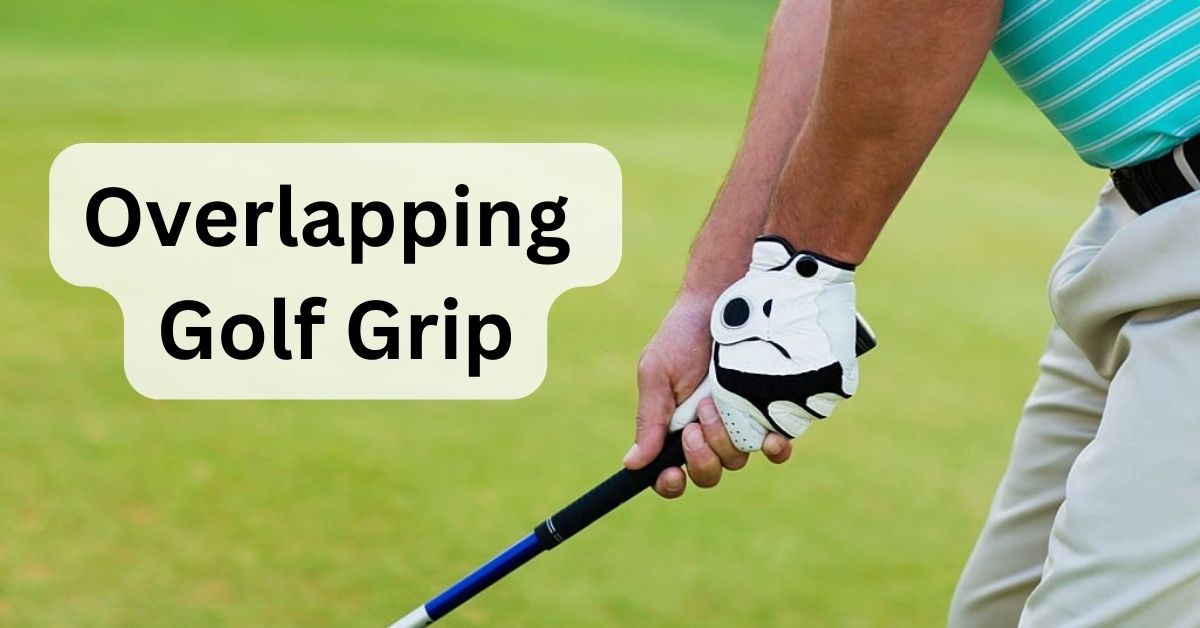Are you a golf enthusiast looking for a way to improve your game? An overlapping golf grip is one of the most popular grips among professional golfers and is often your key to success. In this blog post, we’ll look at what overlapping grip is, how it can benefit your game, and tips on how to master this grip type.
Contents
- Overlapping Golf Grip
- Benefits of Overlapping Golf Grip:
- Tips For Overlapping Golf Grip:
- Pros and Cons of The Overlap Grip:
- Difference Between The Overlap Grip and Interlocking Grip:
- Which Players Used Interlocking Golf Grips?
- Which Players Used overlapping Golf Grip?
- Frequently Asked Questions (FAQs):
- Final Thoughts:
- Author
Overlapping Golf Grip
Overlapping grip is pretty simple in theory – it involves overlapping the pinky finger of your lower hand on top of the index finger of your upper hand when holding the golf club. This allows for more stability and support while making a swing.
It also helps promote good posture throughout the swing. As a result, golfers who use an overlapping grip tend to produce more consistent shots with a better feel than those who don’t.
Benefits of Overlapping Golf Grip:
The significant benefits of overlapping grip are improved accuracy, distance control, and spin control. Since this grip promotes good posture and encourages square contact with the ball, you’re likelier to hit straighter shots that fly farther down the fairway or make their way onto a green.

Furthermore, since there is no shifting from side to side during the swing, you can have greater control over both backspin and sidespin.
Tips For Overlapping Golf Grip:
If you’re interested in giving the overlapping grip a try, here are some tips that will help:
- Place your hands comfortably on the club handle
- Make sure your thumbs are pointing straight down the shaft but not too far toward either side
- Ensure that both hands fit snugly together by “locking” each finger into the place
- Remember to keep your wrists firm but relaxed throughout the swing
- Visualize yourself hitting through the ball with good tempo and rhythm
With practice and patience, anyone can become an expert at using the overlapping grip. Just practice it often and refine your technique as you go. With improved accuracy and distance control, you’ll be well on hitting straighter, farther shots in no time.
Pros and Cons of The Overlap Grip:
Like any other type of grip, there are pros and cons to using an overlapping grip. Here are some of the most notable:
Pros:
-The overlapping grip encourages good posture, making it easier to hit a straighter shot.
-It promotes square contact with the ball, resulting in more consistent shots.
-With the stability and support provided by this grip, golfers can achieve greater control over their backspin and sidespin.
-Works Well for Golfers with Large Hands
-Comfort Level
Cons:
-It can take time and practice to master the overlapping golf grip.
-If not used correctly, it can cause a loss of distance and accuracy.
-Too Much Wrist Freedom
-Less Control for Golfers with Small Hands
Difference Between The Overlap Grip and Interlocking Grip:
The interlocking grip and the overlap grip are both commonly used by professionals. The main difference between the two is that in the interlocking grip, the index finger of one hand intertwines with the pinky finger of the other hand to make a sort of “lock” on the club handle.

With an overlapping grip, the fingers wrap around each other but do not interlock. Additionally, with an overlapping grip, there is usually a slight gap between hands, while in the interlock, there should be no gap.
Which Players Used Interlocking Golf Grips?
Many professional golfers have used the interlocking grip, including Jack Nicklaus, Tiger Woods, Phil Mickelson, and Jordan Spieth.
Jack Nicklaus is perhaps the most famous player to have used this grip since his youth. Using this grip, he developed a more secure hold on the club and greater control over his shots.

Which Players Used overlapping Golf Grip?
Many professional players, including Arnold Palmer and Rory McIlroy, have also used overlapping golf grips. Another notable player who used an overlapping grip was Lee Trevino, one of the greatest golfers of all time.
The overlapping grip is seen as a more traditional method of gripping the club and allows for a slightly looser hold on the club than the interlocking grip.
Related Article:
Frequently Asked Questions (FAQs):
Both the interlocking and overlapping grips can be effective, depending on the golfer’s preferences. Neither grip is necessarily “better” than the other; it is ultimately up to the individual player to decide which grip works best for them. Experienced players may choose to use one type of grip over the other based on their skill level and comfort with a particular grip.
Absolutely! Many golfers prefer to switch between the two depending on their individual needs and playing style. Experiment with both and see which one works best for you.
The key to an adequate grip is ensuring that your hands fit snugly together by “locking” each finger into place. Remember to keep your wrists firm but relaxed throughout the swing, and visualize yourself hitting through the ball with a good tempo and rhythm. You can develop a grip that works for you with practice and experimentation.
Final Thoughts:
In conclusion, the overlapping golf grip can be an effective way for players to grip their clubs and make a successful shot. While no one-size-fits-all grip works best for all players, understanding how the overlapping grip works and practicing with it can give players an edge on the course. Ultimately, finding the correct grip comes down to comfort and preference, so experimenting with different grips may help golfers find the best fit for their individual game.

